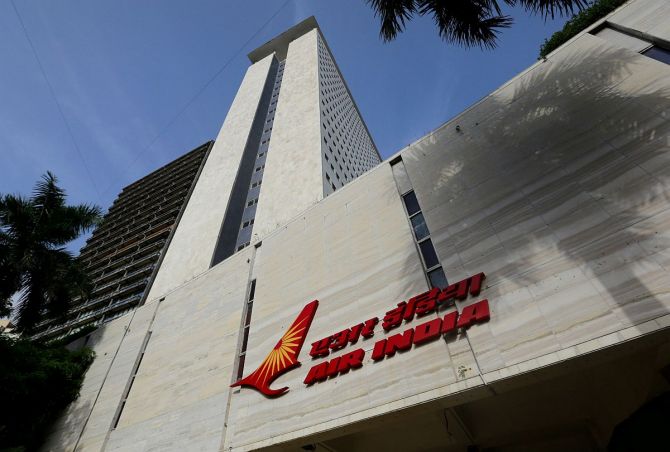
Air India Building’s High-Flying Days Ends
India’s first escalator, its shortest elevator, a terror attack, a rescue operation — the building’s seen a lot.
The Maharashtra government is reportedly set to become the new owner of the iconic Air India building in Mumbai and is expected to turn it into an extension of the Mantralaya (secretariate).
According to news reports, AI Assets Holding Ltd, which owns the building, has ‘in principle’ agreed to the state’s offer of Rs 1,600 crore (Rs 16 billion).
Located at Nariman Point, the 23-storey tower has defined the Mumbai skyline for decades.
Designed by American architect John Burgee, it was completed in 1973 and instantly became one of the most recognisable buildings of Mumbai (then Bombay).
“It was way ahead of its time and showed the vision of J R D Tata,” recalls Jitender Bhargava, former executive director, Air India and author of The Descent of Air India.
For one, it was the first building in the country to have an escalator — from the ground floor to the company’s booking office on the first floor.
“So many people would come in just for a joyride on that escalator,” remembers Bhargava.
It also boasted the shortest lift — from the 22nd floor to the boardroom on the 23rd floor.
“It was a building that stood out also because of the rotating centaur on top. It was a rare thing. All other buildings had neon signs, but this was different and could be seen all the way from Chowpatty or even Malabar Hill,” says Bhargava.
The Air India building was one of the first few skyscrapers at Queen’s Necklace — the others included the Express Towers and Oberoi Sheraton.
Bhargava recalls September 2016, when a fire broke out in the 25-storey Express Towers.
“We opened the windows and hosed the fire. The next day Viveck Goenka (chairman and MD of the Indian Express group) sent us sweets as a thank-you gesture and I remember replying with, “It’s what neighbours do!'”
The Air India building itself came under attack during the 1993 Bombay blasts, when a car bomb exploded in its basement.
“While there was some damage to the building, the foundation was not affected,” says Bhargava.
During the 26/11 terror attack, the tunnel to the basement of the building became a pivotal point.
“It was here that police briefings for taking control of the Trident hotel were held. It also became the route to bring out people rescued from the hotel. I remember it was a very emotional scene,” Bhargava adds.
The building was also home to Air India’s legacy art collection, all of which was displayed on the 18th floor — the publicity department.
“We kind of had a deal with artists at the time. It was a time when Indian art was not exposed to the world and so we’d fly them out in return for paintings sometimes,” says Bhargava.
The collection includes works by celebrated artists such as M F Husain, Anjole Ela Menon and Jatin Das. Husain once even hand painted a hoarding outside the building. “That was how important the building was!” Bhargava says.
Karen Ginwala, who was part of Air India’s flight crew, remembers walking into the building for the final leg of her job interview with JRD in the late 1970s.
“It was a beautiful building, but I was really just a bundle of nerves. The sea view was great, but all I could think of was whether I was going to get the job or not.”
For Bhargava, it was the view that made him want the job more. “I remember my interview day. I looked outside the window and the view was majestic, and I remember thinking: ‘Just one more reason to work here’.”
Air India shifted its headquarters to Delhi some years ago, and under the Tatas now, the airline’s head office is to be based out of Gurugram.
Meanwhile, with the prized piece of real estate at Nariman Point poised to change hands, Bhargava says some things should just not be touched — like the name of the building and the revolving logo on the top.
“They make the Air India building legendary.”
Feature Presentation: Rajesh Alva/Rediff.com
Source: Read Full Article

